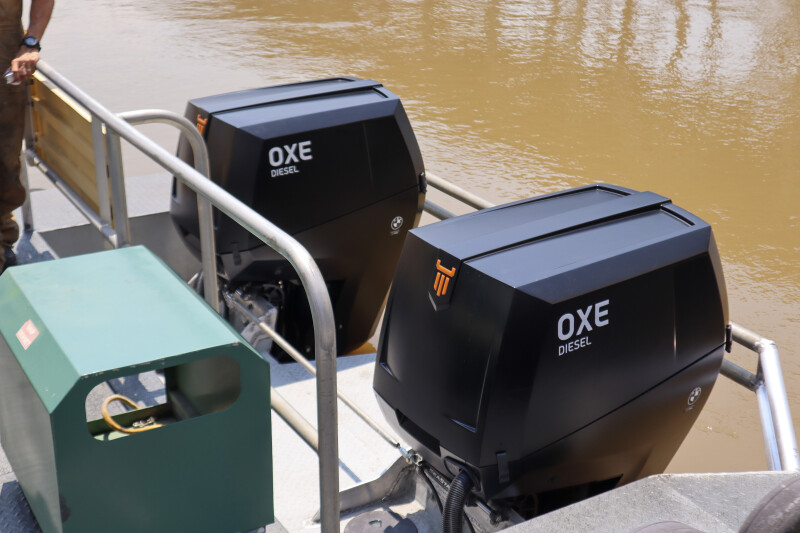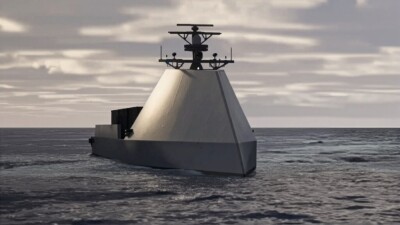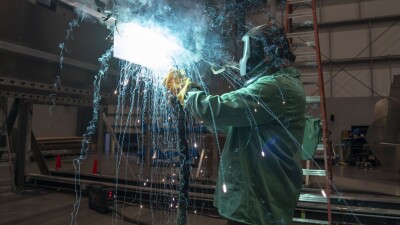Talk to some individuals who hang out on local waterfront docks and love to focus on fast, outboard-powered boats, and when the conversation turns to fuels other than gasoline, a few might project a look of disbelief, even disgust, with remarks like “Who uses that stuff?” and “Boats with other fuels can barely leave their own wake.”
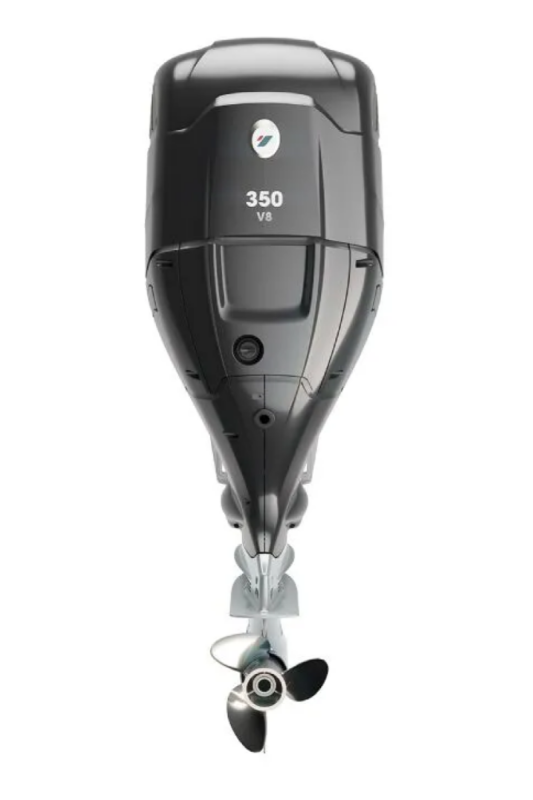
COX MARINE
Well, they don’t pay much attention to modern outboards if they haven’t heard about Cox Marine, Shoreham-by-Sea, England, and its 300-hp diesel outboard, the 300 V8. The engine, first introduced as the CXO300, has been in production since 2020, and in 2022, it set the diesel outboard world speed record in Cumbria, England, from a flying start along a one-kilometer course.
The engine wasn’t optimized for racing but came straight off the production line. The fuel? Not diesel, but hydronated vegetable oil (HVO).
Cox’s latest outboard model, the 350 V8, was introduced in 2024. It’s a 350-hp diesel with twin turbochargers that can also run on HVO. Cox describes the 350 V8 “as the world’s most powerful diesel outboard.” Cox 350 V8 production was due to start in March 2025 with deliveries beginning shortly after that. Cox Marine has a long list of fuels that the 300 and the 350 outboards operate on, including jet fuel for a military boat, “so you don’t have to carry two types of fuel,” said Patrick Bucci, vice president at Ring Power Corp., St. Augustine, Fla., the Cox Marine diesel outboard distributor for Florida, Georgia, the Carolinas, and Bermuda. “We have validated the largest brand of fuels of any diesel outboard.”
Worldwide, Cox has a list of 22 approved fuels for Europe, North America, Asia, Oceania, Africa, and the military.
The Cox Marine 350 has a 4.4-liter block, which, according to Hugh Hudleston, Cox’s regional director, Americas, “is bigger than anything in the industry and was designed to be an outboard engine.” Cox Marine built the engine from the skeg up to be an outboard, said Hudleston. “We did not use a marinized automotive block, so we were able to reduce weight.” Thus, despite its size, the 350’s 4.4-liter block with twin turbochargers is typically lighter than a 3.0-liter block. “We have some ways to go to gain horsepower beyond 350,” he said.
The 350 V8 has EPA Tier 3 approval for commercial and recreational use, as well as IMO Tier II (a nitrogen oxide standard), and RCD-2, a European Union regulation that applies to leisure watercraft. Bucci said the engine has Lake Constance validation (a water quality standard associated with the second largest lake in Western Europe), “which is one of the toughest emission regulations in Europe.
Hudleston emphasized the service advantages of the Cox 350 in commercial operations. “We do the first service at 50 hours and then every service at 250 hours, as opposed to 100 hours for traditional outboards.”
Asked about reliability, a Cox Marine spokesperson said validation testing ensures the company’s engines perform optimally in diverse environments. “We have been testing in Texas, Florida, the Middle East, Sweden, Singapore, and the U.K., exposing the outboards to unique conditions, from extreme heat to cold temperatures and varying water salinity,” he said. “This is how we guarantee our engines meet the highest performance standards and can withstand the demands of different waters worldwide.”
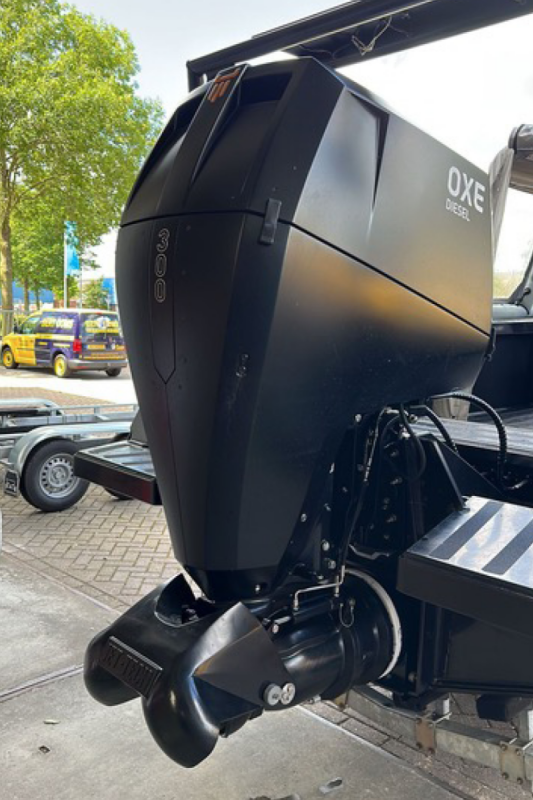
OXE MARINE
“Diesel outboards are our key market,” said Lenny Jensen, chief technology officer at OXE Marine, Ängelholm, Sweden. “The only focus is government and commercial users.”
OXE Marine’s five diesel outboard models range from 150 to 300 hp. “The main driver is the OXE300 when it comes to power-to-weight ratio,” said Jensen. The OXE300 weighs just under 1,000 lbs., which is heavy compared with gasoline outboards, Jensen acknowledged, but “Commercial users, they need a big prop and a lot of torque moving heavier loads.” He added, “We can run a 17" prop, no one else can, transferring all the power from power heads to propeller shaft and utilize all the torque.”
The OXE diesel’s fuel economy is better than a modern, leisure, gasoline outboard, according to the OXE Marine website. Burning 46% less fuel also means the OXE diesel reduces CO2 emissions. Depending on the application, OXE said its outboards average 30% to 40% reductions, and up to 50% at wide-open throttle.
OXE Marine has also developed the OXE Hybrid 450, a diesel-electric hybrid outboard, introduced in 2023. But the model is not yet viable as a commercial product, said Jensen. “Boatbuilders aren’t there yet, and the battery technology is not really there,” he said. “We’ve seen a lot of movement, but they aren’t ready yet.”
The OXE Marine lineup also includes the OXE300 JET-TECH, a diesel outboard waterjet designed for use in shallow water, with a 1:1 ratio of power to propulsion (a measure of efficiency). “We are the only one that has that,” said Jensen, “very environmentally friendly.”
A bi-turbo configuration provides 502 ft-lbs. of torque at 1,750 rpm. At 1,000 rpm, it’s 369 ft.-lb. at the crankshaft, which means fast acceleration and powerful bollard pull. JET-TECH delivers 100% of its engine horsepower as waterjet propulsion.
The OXE300 JET-TECH was introduced specifically for clients that operate in shallow water. “Generally,” said Jensen, “waterjets are very inefficient. They lose a lot of power driving that impeller.” But, he added, “We changed all that.” Whereas the standard waterjet “has the shaft coming from front of it to the water intake, we power from the back with a belt so we have unrestricted water before the impeller. There’s nothing in the way of the impeller.”
The OXE Marine approach differs from other manufacturers, said Jensen. “We take a certain model automotive engine, marinize it and keep it horizontal. That’s different from any other diesel outboard out there.” A good example is the BMW 300 powerhead that was added to the OXE Marine outboards in 2020.
The OXE team has been focused on reliability and support since rolling out the OXE300 in 2020, said Jensen. “We encountered some challenges in offshore and hot climates, which we identified and learned from. We recognized that not all applications are the same, nor are the environments in which they operate.”
Jensen said that the manufacturer has since made several updates and upgrades to both existing outboards and the new models that are now entering the market. “Notable updates include a new air intake system with a highly effective water and mist mitigation system for tough users in rough seas, an upgraded cooling capacity that supports up to 40°C seawater temperature without derating — which is unheard of in the industry — and several updates to enhance the serviceability and lifespan of key components.”
The results have been positive, said Jensen. “We’ve seen significant improvements in the fleets, and we’ve proven our capabilities in major markets, with hundreds of OXE outboards running in fleets worldwide. The largest single fleet is 80 units.”
OXE recognizes that its diesel motors are not your typical outboards, according to Jensen. “We are a traditional inboard motor hanging at the back of the boat,” he said. “As such, we needed to train our support network to understand that installing and maintaining an OXE outboard differs from a traditional gas outboard. This was a key challenge we identified, and if installed and serviced correctly, boaters will enjoy more time on the water.”
An OXE outboard requires servicing every 200 hours, said Jensen, compared to 100 hours for a gasoline outboard.
OXE Marine offers training for its network of distributors, dealers, and original equipment manufacturers at both its U.S. and Swedish facilities, and Jensen said the company has dialed in on service and support as a key area of focus. “This means more experts on the ground, both in the U.S. and globally, as well as a well-stocked warehouse in the U.S. and Europe, ensuring fast delivery when needed,” he said.
Jensen said it is important for OXE to seek feedback from its customers. “One of our strengths is that we listen closely to our users, working to understand their needs and challenges,” he said. “We take an outside-in approach, rather than the traditional inside-out approach that many companies take.”
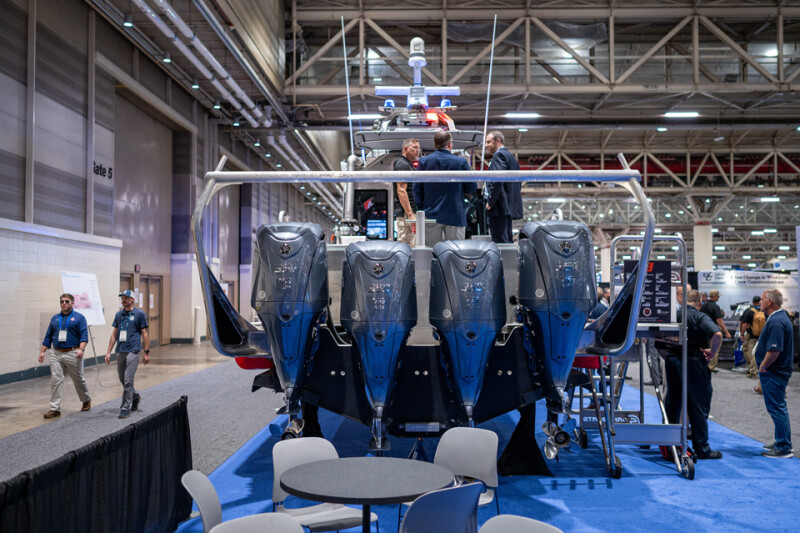
YAMAHA
Yamaha Motor Corporation, USA, Cypress, Calif., pushes two outboards as perfect fits for the workboat market: the F350, introduced at the beginning of 2024, and the XTO 450, launched in 2023. “Both provide excellent thrust, torque and acceleration,” said Neal Wheaton, a media spokesman for Yamaha’s U.S. marine business. The V8 XTO 450 started as the XTO 425 in 2017 and became the XTO 450 in 2023. The additional 25 hp is not going to provide a vessel operator much additional speed, but the extra horsepower will come into play when lower-end torque and acceleration is needed, said Wheaton.
Additionally, integrated electric steering is now standard on the XTO 450 and the F350. “We are the only people in the market that have integrated electric steering,” said Wheaton. “It’s integrated into brackets, nothing external, on the 450 and 350. Steering is a lot more responsive, smoother, and pretty much maintenance-free. It’s all electric, so no maintenance is required.”
The original 350 was a V8, then requests started coming in for a lighter version. “That’s why the new 4.3-liter 350 was created to fill a gap in the market. It’s the lightest at 350 [hp] in the market,” said Wheaton. “It has to do with going from V8 to V6, based on a 4.2-liter platform.” The 350 weighs 629 lbs.
The additional power provides more low-end torque and acceleration. “You notice a big difference in acceleration and torque,” said Wheaton. Plus, there’s “better low-speed maneuverability because a lot of the exhaust is coming not through the propeller, but the ventilation plate.” That also leaves cleaner water during low-speed maneuvering around a dock.
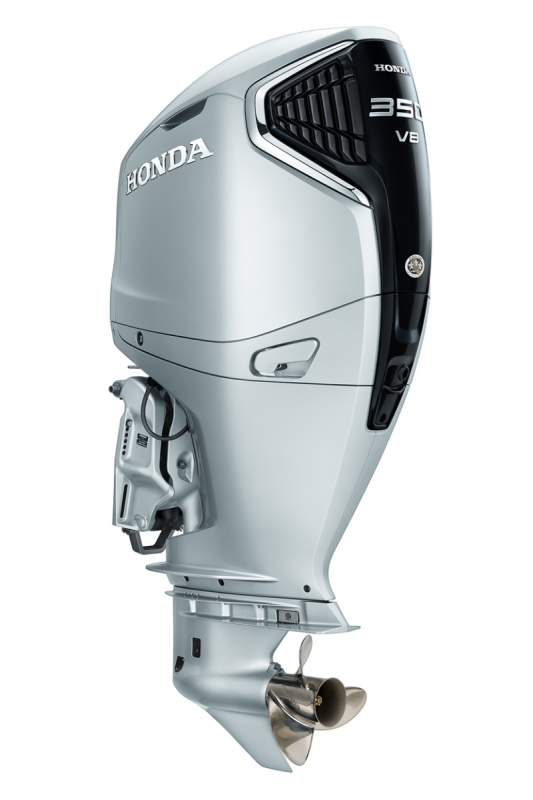
HONDA MARINE
Asked why Honda Marine, Alpharetta, Ga., introduced its first production V8 outboard, the BF350 V8, the company’s marketing manager, Steve Drenkard, didn’t hesitate to deliver an answer that many people who grew up in the U.S. will undoubtedly identify with: “The great thing about being an American is bigger is better. It’s the American way: bigger and bigger is better,” proclaimed Drenkard. Thus, Honda’s answer to “bigger is better” was the Honda BF350 V8, which was introduced in 2024. Drenkard said the outboard’s fuel economy is as much as 20% better than the competition.
Following the introduction of the new outboard, Honda Marine aimed to bridge the horsepower gap between the new BF350 and the BF250, which debuted in 2011. “This year, the McLaren M300 is the new motor,” Drenkard said, referencing the 300-hp, V6 outboard introduced in January. The engine was developed through a group effort between Honda Marine and McLaren Engineering, Detroit, a division of Linamar, Guelph, Ontario. McLaren utilized the Honda 250-V6 platform and added a “new higher-lift, larger-duration camshaft and then used larger Honda stock injectors and reprogramed the electronic control unit to support the new camshaft, provide higher fuel supply and boost efficiencies. It’s our V6 with a cam in it,” said Drenkard.
Internal enhancements to the V6 doubled the time between valve adjustments from 200 hours to 400 and standardized all drive-by-wire controls, said Drenkard. An oxygen sensor was added to enhance fuel economy. A lean burn-control system was designed to also increase fuel economy, and Drenkard noted that “the industry has had a tough time with saltwater and oxygen sensors. We figured out a way to make them last.”
For boat owners who are not yet ready to commit to a new outboard but are looking to the future, Drenkard said, “We have new motors coming in the next several years.”
Eric Haun, Executive Editor, contributed to this report.




